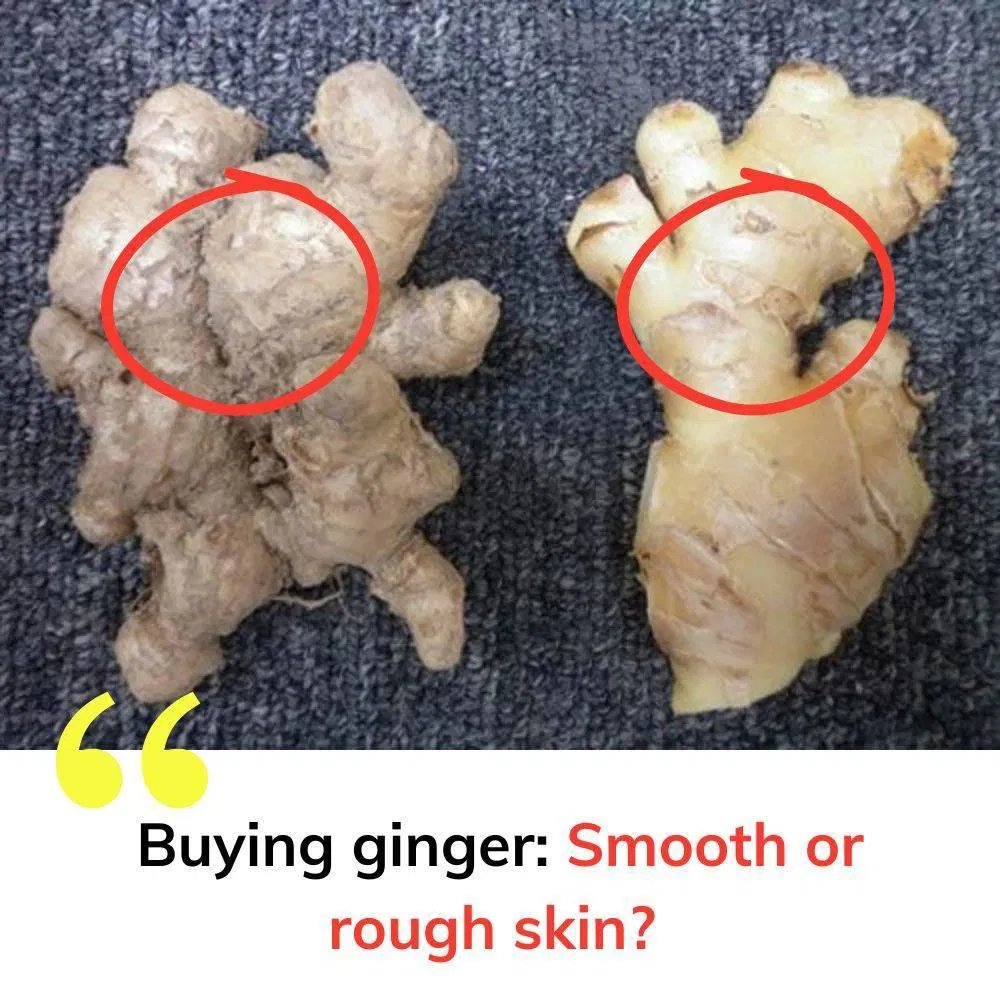ADVERTISEMENT
1. Smooth Skin vs. Rough Skin: What’s the Difference?
When selecting ginger, the first thing you’ll notice is the texture of its skin. Some ginger roots have a smooth, thin, and shiny skin, while others appear rough, wrinkled, and dry. These differences are key indicators of the ginger’s age and quality.
- Smooth Skin Ginger:
- Indicates fresh, young ginger.
- The skin is thin, making it easy to peel (sometimes you can even scrape it off with your fingernail).
- Has a mild, slightly sweet flavor with a juicy texture.
- Great for fresh consumption, such as in teas, smoothies, or salads.
- Rough Skin Ginger:
- Indicates older, mature ginger.
- The skin is thick and dry, requiring a peeler or knife to remove.
- Has a stronger, spicier, and more pungent flavor.
- Best suited for cooking, drying, or making ginger powder.
2. When to Choose Smooth Skin Ginger
Fresh, smooth-skinned ginger is often called young ginger. It’s ideal when you need a milder ginger taste or a soft texture. Here’s when to choose it:
✅ For fresh use – If you’re making ginger tea, juices, or smoothies, the mild flavor of young ginger is perfect.
✅ For salads and garnishes – Thinly sliced or grated young ginger adds a fresh zing without being overpowering.
✅ For quick cooking – It softens faster in stir-fries, soups, or sauces due to its tender texture.
✅ For easy peeling – If you prefer a hassle-free preparation process, go for smooth-skinned ginger.
3. When to Choose Rough Skin Ginger
Older, rough-skinned ginger has a more intense, spicy kick. It’s best used when you want a stronger ginger flavor or plan to store it for a longer time. Here’s when to choose it:
✅ For cooking – The bold flavor stands out in curries, marinades, and stews.
✅ For making ginger powder – Dried, mature ginger is best for grinding into a fine powder.
✅ For herbal remedies – The concentrated spice is great for strong ginger teas or medicinal concoctions.
✅ For long-term storage – Mature ginger lasts longer and is more resistant to spoilage.
4. How to Test Ginger for Freshness
Regardless of whether you’re choosing smooth or rough skin ginger, freshness is the key to getting the best flavor and benefits. Here’s how to test for fresh ginger:
✔️ Firmness – Fresh ginger should feel firm and dense when you press it. If it feels soft or shriveled, it’s past its prime.
✔️ Skin appearance – Look for shiny, unblemished skin without mold or dry spots.
✔️ Aroma – Fresh ginger has a strong, spicy fragrance. If it has little to no smell, it might be old.
5. How to Store Ginger Properly
To keep your ginger fresh, store it the right way:
- For short-term use (up to 2 weeks): Store it in the refrigerator in a sealed container or plastic bag to keep it from drying out.
- For long-term storage (months): Freeze whole ginger pieces in an airtight bag. You can grate frozen ginger directly into your dishes without thawing!
- For dried ginger: Slice and dehydrate it, then grind it into powder for use in baking, tea, and spice blends.
Final Verdict: Which One Should You Buy?
It depends on what you’re using it for!
- For fresh eating, teas, and mild flavor → Choose smooth-skinned, young ginger.
- For bold flavor, cooking, and storage → Choose rough-skinned, mature ginger.
Now that you know what to look for, you can confidently pick the perfect ginger for your next recipe! 🌱✨
ADVERTISEMENT
